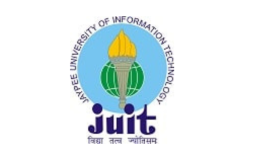An Effluent Treatment Plant (ETP) is a facility designed to treat wastewater generated from industrial activities. Unlike sewage treatment plants that primarily deal with domestic wastewater, ETPs are specifically tailored to manage and treat the effluents produced by industries, which often contain a complex mixture of harmful chemicals, heavy metals, organic pollutants, and other contaminants. The primary objective of an ETP is to remove these pollutants to meet regulatory standards, ensuring that the treated water is safe for discharge or reuse.
Importance of Effluent Treatment Plants
ETPs are crucial for several reasons:
- Environmental Protection: Untreated industrial effluents can severely pollute water bodies, harming aquatic life, contaminating drinking water sources, and disrupting ecosystems. ETPs remove harmful contaminants from the wastewater, preventing environmental degradation and preserving biodiversity.
- Regulatory Compliance: Governments and environmental agencies have established stringent regulations for the discharge of industrial effluents. ETPs ensure that industries meet these regulatory standards, avoiding legal penalties and contributing to sustainable development.
- Public Health: Industrial effluents can contain toxic chemicals and pathogens that pose significant health risks to communities living near industrial areas. By treating wastewater, ETPs help protect public health by preventing the spread of waterborne diseases and exposure to hazardous substances.
- Water Conservation: Treated effluent can be reused in industrial processes, agricultural irrigation, or other non-potable applications, reducing the demand for freshwater resources. ETPs contribute to water conservation efforts, which are increasingly important in regions facing water scarcity.
- Corporate Social Responsibility (CSR): Companies are increasingly recognizing the importance of environmental stewardship as part of their corporate social responsibility. Implementing ETPs demonstrates a commitment to sustainable practices, enhancing a company’s reputation and fostering positive relationships with stakeholders.
Stages of Effluent Treatment
The effluent treatment process typically involves multiple stages, each designed to remove specific types of contaminants from the wastewater. These stages include preliminary, primary, secondary, and tertiary treatment.
- Preliminary Treatment
Preliminary treatment is the first stage in the effluent treatment process, focusing on the removal of large solids and debris that could interfere with subsequent treatment stages. This stage involves the following processes:
-
- Screening: Large particles such as plastics, rags, and other debris are removed from the effluent using screens. This prevents clogging and damage to pumps and other equipment in later stages.
- Grit Removal: Grit chambers are used to remove sand, gravel, and other heavy particles that could cause abrasion and wear in mechanical equipment.
- Oil and Grease Removal: Effluents from certain industries, such as food processing and oil refineries, may contain significant amounts of oil and grease. These are removed through skimming or dissolved air flotation (DAF) processes.
- Primary Treatment
Primary treatment focuses on the removal of suspended solids and organic matter from the effluent. This stage typically involves sedimentation and coagulation-flocculation processes:
-
- Sedimentation: In sedimentation tanks, the effluent is allowed to stand, enabling heavier solids to settle at the bottom as sludge. This sludge is later removed and treated separately.
- Coagulation-Flocculation: Chemical coagulants are added to the effluent to destabilize suspended particles, causing them to aggregate into larger flocs. These flocs are then removed through sedimentation or filtration.
Primary treatment reduces the concentration of suspended solids and organic pollutants, preparing the effluent for more advanced treatment stages.
- Secondary Treatment
Secondary treatment aims to remove dissolved and suspended organic matter from the effluent using biological processes. This stage involves aerobic or anaerobic treatment methods:
-
- Activated Sludge Process: In this process, microorganisms are introduced into the effluent in an aeration tank. These microorganisms consume organic matter, converting it into carbon dioxide, water, and biomass. The treated effluent is then passed through a secondary clarifier to separate the biomass (activated sludge) from the treated water.
- Trickling Filters: Effluent is sprayed over a bed of porous material (such as stones or plastic media) on which a biofilm of microorganisms grows. As the effluent trickles down, the microorganisms degrade the organic matter.
- Anaerobic Treatment: In anaerobic digesters, microorganisms break down organic pollutants in the absence of oxygen, producing biogas (methane and carbon dioxide) as a byproduct. This process is particularly effective for treating high-strength industrial effluents with high organic content.
Secondary treatment significantly reduces the biochemical oxygen demand (BOD) and chemical oxygen demand (COD) of the effluent, making it safer for discharge or further treatment.
- Tertiary Treatment
Tertiary treatment, also known as advanced treatment, is the final stage of effluent treatment. It involves additional processes to remove remaining contaminants, such as nutrients, pathogens, and trace organic compounds:
-
- Filtration: Sand filters, activated carbon filters, or membrane filtration systems are used to remove fine particles and residual organic matter from the effluent.
- Disinfection: Disinfection processes, such as chlorination, ultraviolet (UV) irradiation, or ozonation, are used to eliminate pathogens and ensure that the treated effluent is safe for discharge or reuse.
- Nutrient Removal: Processes such as nitrification-denitrification and phosphorus removal are employed to reduce the levels of nitrogen and phosphorus in the effluent, preventing eutrophication in receiving water bodies.
Tertiary treatment produces high-quality effluent that meets stringent environmental standards and can be safely discharged into the environment or reused.
Types of Effluent Treatment Plants
ETPs are designed to meet the specific needs of different industries and can be classified into several types based on their configuration and treatment processes:
- Chemical ETPs
Chemical ETPs are primarily used for industries that produce effluents with high concentrations of inorganic pollutants, such as heavy metals, acids, and alkalis. These plants rely on chemical processes such as neutralization, precipitation, and coagulation-flocculation to treat the effluent.
- Biological ETPs
Biological ETPs are designed to treat effluents with high organic content, such as those produced by food processing, paper mills, and textile industries. These plants use biological processes, such as the activated sludge process or anaerobic digestion, to degrade organic pollutants.
- Combined ETPs
Combined ETPs incorporate both chemical and biological treatment processes to address effluents with complex compositions, including both organic and inorganic contaminants. These plants are commonly used in industries with diverse wastewater streams, such as pharmaceuticals and petrochemicals.
- Modular ETPs
Modular ETPs are prefabricated, compact units that can be easily installed and expanded as needed. They are ideal for small to medium-sized industries or remote locations where space and infrastructure are limited.
- Zero Liquid Discharge (ZLD) ETPs
ZLD ETPs are advanced systems designed to treat industrial effluent to a level where no liquid waste is discharged. Instead, the treated water is entirely reused within the industrial process, and the remaining solids are either recycled or safely disposed of. ZLD systems are particularly important in water-scarce regions and industries with stringent environmental regulations.
Benefits of Effluent Treatment Plants
Implementing ETPs offers numerous benefits to industries, the environment, and society:
- Environmental Sustainability: ETPs help industries minimize their environmental footprint by reducing the discharge of harmful pollutants into water bodies. This contributes to the preservation of aquatic ecosystems and the overall health of the environment.
- Resource Recovery: Modern ETPs are designed to recover valuable resources from wastewater, such as biogas from anaerobic digestion, nutrients for fertilizers, and clean water for reuse. This reduces waste and enhances the sustainability of industrial operations.
- Cost Savings: By treating and reusing wastewater, industries can reduce their reliance on freshwater resources, lower their water procurement costs, and avoid the expenses associated with environmental penalties.
- Improved Public Health: ETPs protect public health by preventing the contamination of drinking water sources and reducing the spread of waterborne diseases in communities near industrial areas.
- Enhanced Corporate Image: Companies that invest in ETPs demonstrate a commitment to environmental responsibility and sustainability. This enhances their corporate image, fosters goodwill with stakeholders, and can lead to increased customer loyalty.
Conclusion
Effluent Treatment Plants are indispensable for managing industrial wastewater in an environmentally responsible manner. By treating and purifying effluents before they are released into the environment or reused, ETPs play a crucial role in protecting water resources, public health, and ecosystems. As industries continue to grow and environmental regulations become more stringent, the importance of ETPs in promoting sustainable industrial practices will only increase. Investing in advanced and efficient ETPs is essential for ensuring a cleaner, healthier, and more sustainable future for all.




